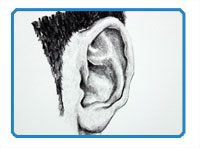
By Matt Fussell
When it comes to drawing ears, some people run into issues. These issues most likely arise from drawing the ear incorrectly over and over again. The truth is, every ear is different. In order to draw an ear accurately, you must observe your subject closely. There is not a "catch all" formula for drawing ears.
There is however, a process of observation that will help you be more successful with your drawing. Fortunately, it is a simple two-step process that can be applied to any set of ears that you draw.
The following video uses this two-step process of drawing the contours and then filling in the value...
The first step is to draw the contours (or outlines) of the ear. These "lines" will exist in areas of high contrast of value. Areas where the value is gradual will not require a line to be drawn.
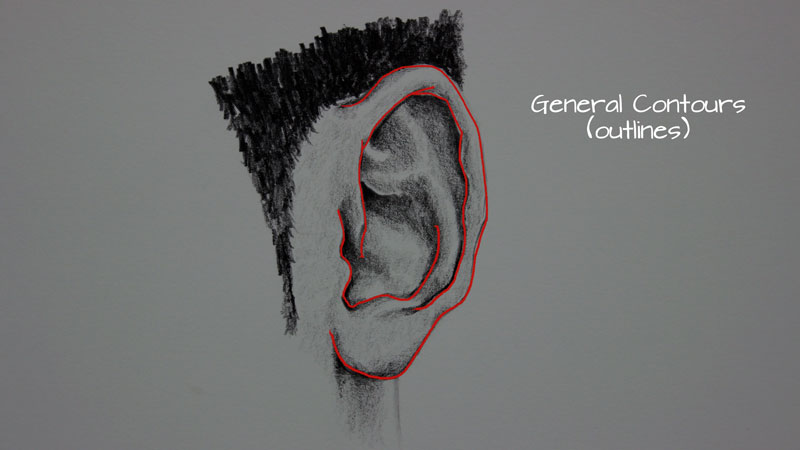
The second step is adding the value, or shading. This can be accomplished using an "HB" pencil (#2) followed by a softer (darker) pencil. During the process of adding value, you pay attention to the areas that are dark and light on your subject, whether that is a photo reference or a live model.
The lighter areas will generally look as though they are protruding...
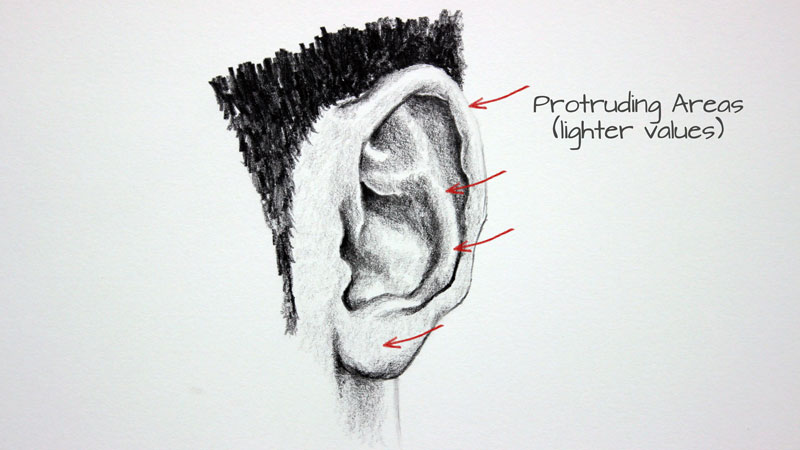
Conversely, areas that recede will need to be addressed with darker values, since less light is able to reach these areas...
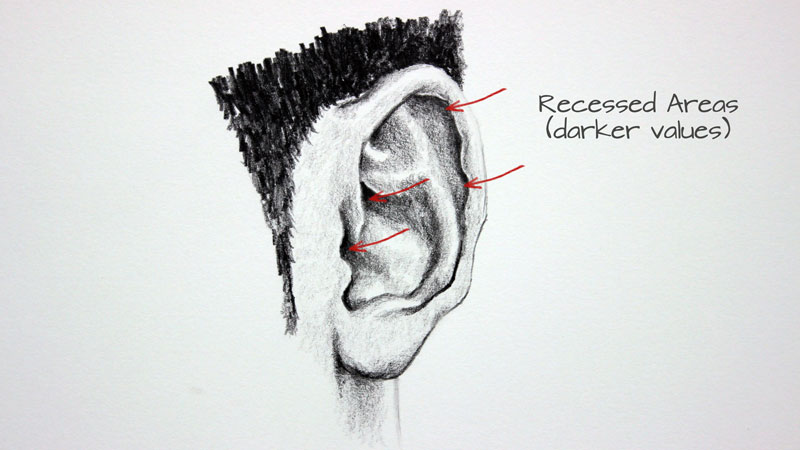
Many people recognize that ears can be challenging to draw but do not recognize the importance of drawing ears accurately. As you can see, its not that difficult to draw ears. All it takes are a few lines and then the rest is adding value.
When you are drawing ears, remember where the ears are found. The top part of the ears are in line with the "eye" line and the bottom of the ears are in line with the "nose" line. I suggest you check out the art lesson on facial proportions. Remember, like all facial features, ears come in many different shapes and sizes. When you draw them, make sure you are looking at your subject and pay attention to the lines and shapes that you see. (More tips on drawing ears can be found at the bottom of this page.)
The second video art lesson shows you how to draw ears. (This lesson is a bit old, but still helpful.)
1. Look at the ears that you are trying to draw- Observation is the most important part of drawing anything. Drawing ears is no exception. In order to draw realistic eyes, you must look at them. Have you ever taken a photo of something without pointing a camera at it?
2. Remember that every ears is different- This is true of every facial feature. No two eyes are alike, no two noses, and two ears. There is not a formula for drawing all ears. You must learn to look and notice subtle differences that exist on different subjects and from different angles.
3. Ears are sometimes partially or completely covered by hair- Don't become so obsessed with drawing the ears that you forget the big picture. The ears should complement the portrait, not over power it. Your goal in the end should be to draw and accurate portrait.
4. Make sure that your ears are located in the right place- Proportionally speaking, most people's ears are located between the eye line and the nose line. This means that the top of the ears are generally in line with the eye line and the bottom of the ears line up with the bottom of the nose.
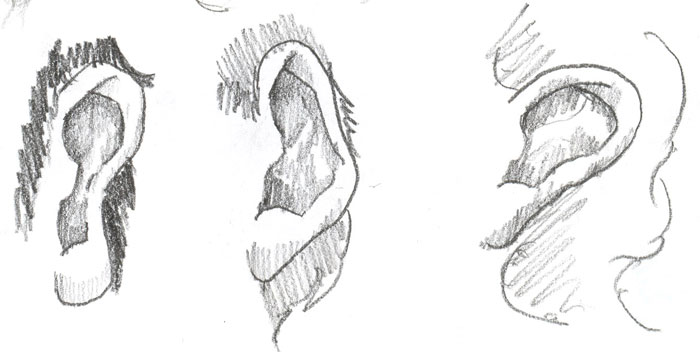
Here are some more art lessons that you may like...